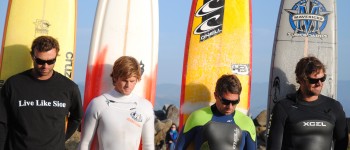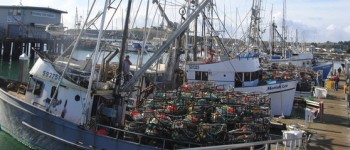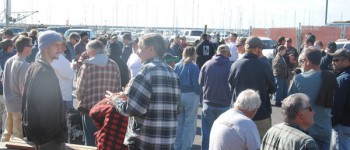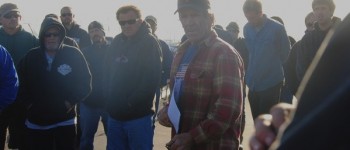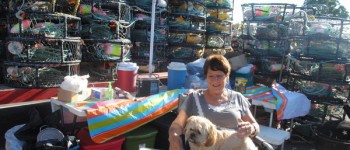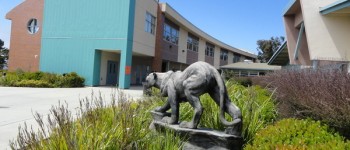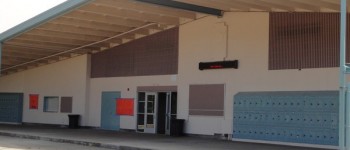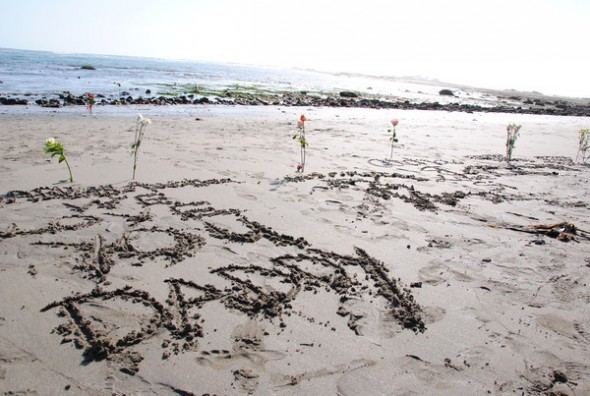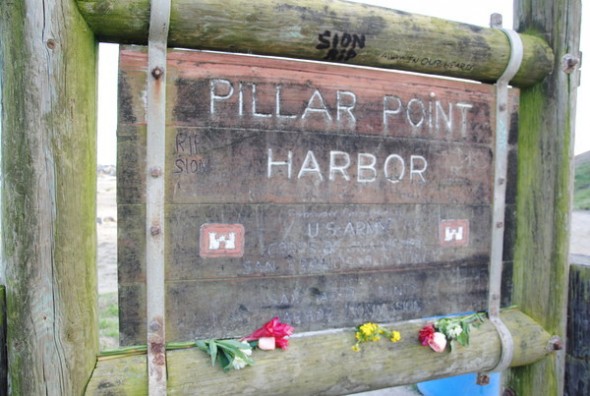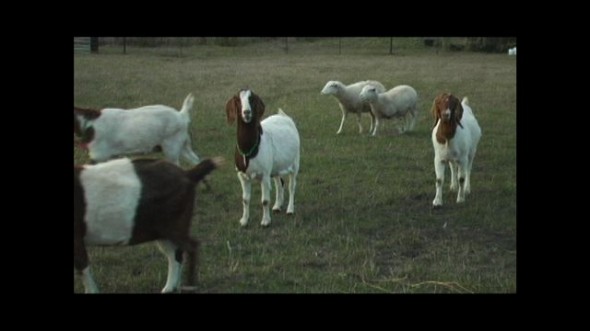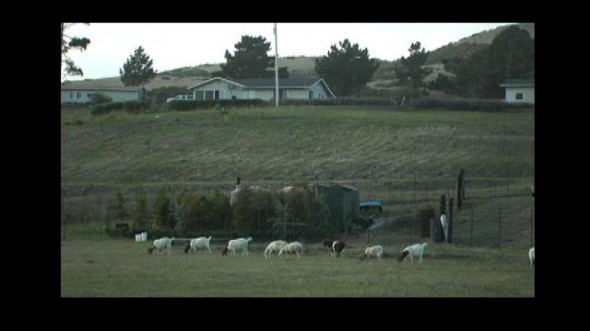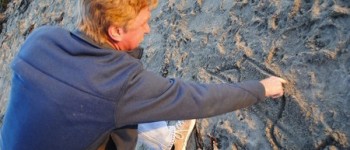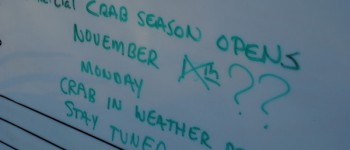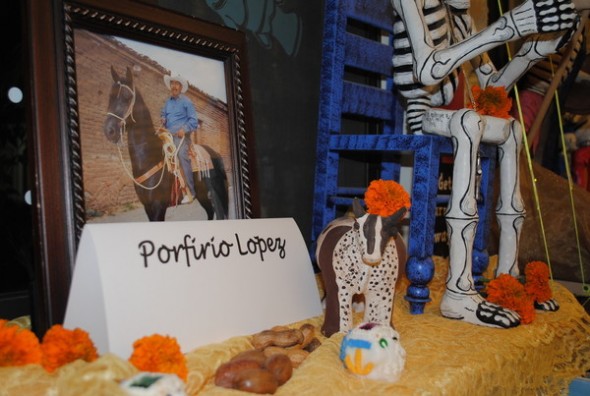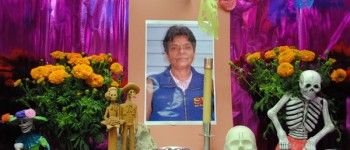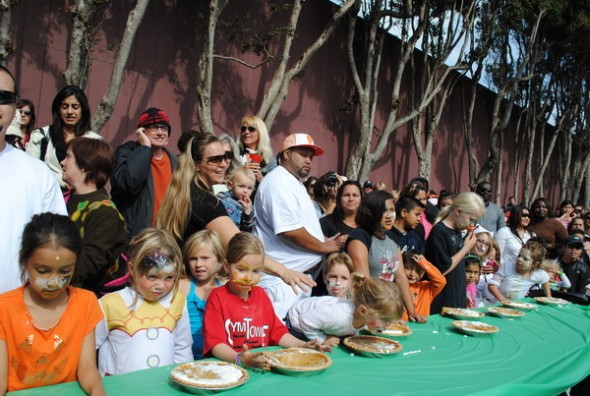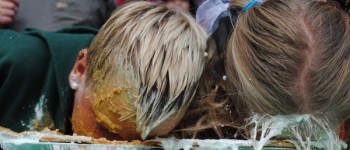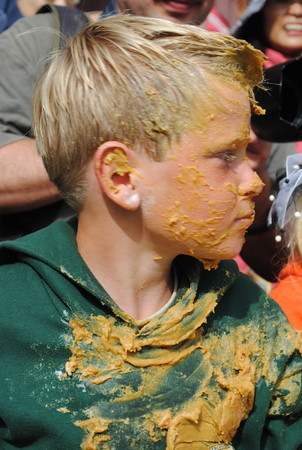story and photos by Kristine A. Wong (Note: This story originally appeared on Half Moon Bay Patch on June 10, 2011).
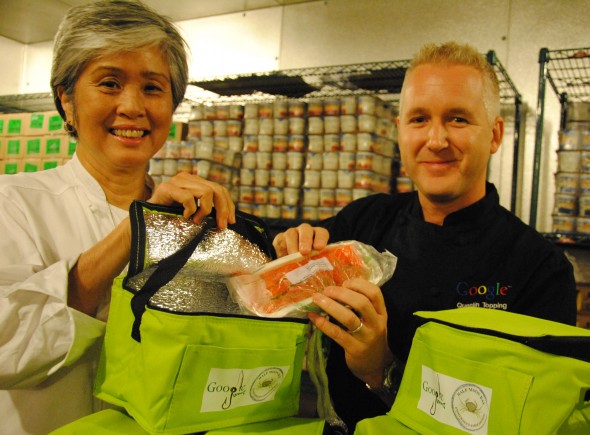 With the debut of a new Community Supported Fishery (CSF) in Half Moon Bay, a group of Pillar Point fishermen are collaborating with local community members, businesses and Internet giant Google as a way to support sustainability of fish stocks, the ocean, and local livelihoods.
With the debut of a new Community Supported Fishery (CSF) in Half Moon Bay, a group of Pillar Point fishermen are collaborating with local community members, businesses and Internet giant Google as a way to support sustainability of fish stocks, the ocean, and local livelihoods.
They’re also providing employees of the Silicon Valley company with access to fish much fresher than what’s in their local supermarket, according to Google chef and Half Moon Bay resident Olivia Wu. The CSF is the first of its kind in Northern California, and one of a small handful in the state.
For those who can’t drop by Pillar Point Harbor to buy fish off the boat on their way home from work, a little more than 48 hours from ocean to table doesn’t seem to be too bad—a plausible scenario for Google employees who picked up a 1-pound fillet of chinook salmon on a recent Friday caught two days before by Half Moon Bay fisherman Jim Anderson.
How did this all begin?
From her five years of writing about sustainable seafood for the San Francisco Chronicle — as well as her self-described passion for fresh seafood and support of sustainable fisheries — Wu got to know the Half Moon Bay fishing community well from regular forays down to Pillar Point Harbor.
Though her role changed a few years ago after taking a position at Google as one of six executive chefs, seafood was still on her mind.
“It was really obvious to me that there should be a partnership between local [seafood] producers and Googlers,” she said, referring to employees of the famed company which has 10,000 employees working at its Mountain View campus. “Googlers care a lot about the quality of our food and its impact on the environment,” she said.
Wu found a natural collaborator in fellow Google Executive Chef Quentin Topping, who grew up on the East Coast and had been on a personal quest to find fresh seafood at markets since his move West. Like Wu, Topping was aware of the precarious positions of the oceans with their declining fish stocks, and the tough times small fishermen had weathered in recent years.
“Seafood these days is moving in the direction of long hauls, which are destroying habitats,” he said. “When you have a great seafood resource you have to protect it and treat it in a responsible manner from the boat to the end product.”
Both Wu and Topping knew fishermen at Pillar Point Harbor who fished using sustainable methods in day boats, described by Topping as using “artisan” ways.
“We both realized that we could bring this amazing product to Googlers,” Topping said.
The idea also fit with Google’s policy of supplying their 27 workplace cafes with fish caught within 200 miles of its Mountain View campus.
So a few years ago, Wu brought Pillar Point fishermen and Half Moon Bay resident and San Mateo County Harbor District Commissioner Pietro Parravano to Google. Then, she approached Parravano with the idea of bringing freshly-caught Half Moon Bay seafood to employees.
“It was a slow process, it took two years,” Parravano said. He already had a hand in starting the Cape Ann Fresh Catch CSF in Gloucester, Mass., which is part of a larger network of CSFs on the East Coast.
The hangup? Parravano said it was “consistency”: finding a time that worked each week for all the fishermen to have their catches ready.
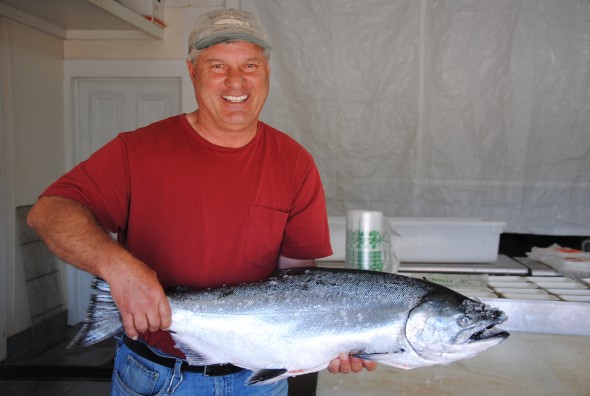 But at the end of March something clicked, and Jim Anderson, who fishes solo on the Allaine boat, got the call for help. He previously co-championed the first off-the-boat crab and fish sales at Pillar Point Harbor, held positions on the California Salmon Council and the state Dungeness Crab Task Force, and is involved in a salmon DNA identification project along the West Coast.
But at the end of March something clicked, and Jim Anderson, who fishes solo on the Allaine boat, got the call for help. He previously co-championed the first off-the-boat crab and fish sales at Pillar Point Harbor, held positions on the California Salmon Council and the state Dungeness Crab Task Force, and is involved in a salmon DNA identification project along the West Coast.
“Forty-eight hours later, we had our first meeting,” Anderson said. The exploratory gathering included a select group of peers like Duncan MacLean, head of the Half Moon Bay Fishermen’s Marketing Association, and Ben Parsons, an El Granada resident who fishes on the Mr. Morgan Boat docked at Pillar Point with Captain Steve Fitz.
The meeting indicated an interest in a Half Moon Bay CSF, so Anderson and Parsons’ wife Shannon acted quickly to form a Half Moon Bay Fishermen’s Association. The association was a necessary configuration if the fishermen were to get paid and engage in other business transactions as a CSF.
What motivated Parsons’ involvement? “I want to be able to support the fishermen and help them do what they love to do, what they’re good at, which is fishing,” she said.
Seven fishermen are currently on board to fish for the CSF. Parsons says participating boats represent those who provide quality fish using sustainable methods. The Mr. Morgan boat, for example, fishes for flatfish using Scottish seines, a type of equipment that lacks steel trawl doors or cables associated with degradation of ocean floor habitat.
The CSF was modeled after Community Supported Agriculture (CSA) programs where farmers are supported by locals who purchase shares of the farm’s production in advance of a season. The up-front investment supports small operators who might not have the capital to continue operating otherwise.
“They don’t have to worry about selling the fish when they get back,” Parsons said, adding that with the CSF, the fishermen know how much fish they have to catch before they head to sea — which not only saves time, but also gas, money, and wasted fish the boats cannot sell upon their return.
And since what’s delivered each week to members are what the fishermen are able to catch, it’s discourages overfishing and focuses on seasonal fish instead, according to Anderson.
“It also allows people to eat food that is incredibly fresh and local, not a product that’s been trucked up and down the coast just to get here,” he said.
With the basic structure in place, the group had a flurry of meetings over just eight weeks to prepare for the May 27 debut. Other key players involved CSA software specialist Farmigo and Eriko Fujino, owner of Princeton fish processor Blue Ocean Smoke House.
Fujino receives deliveries from the fishermen, cuts and package the fish for CSA shareholders (in biodegradable trays and plastic bags purchased especially for the CSF by Wu), and sends it south with fish wholesaler Monterey Fish to Google for a Friday morning delivery.
Using Farmigo’s software, which is built on a Google platform and designed for ventures like CSAs, Google employees can sign up for up to receive fish every week or every other week for three months. They can even put their account on a vacation hold. Parson and Anderson plan to open an online store in July, where subscribers can purchase additional fish or order other items such as squid or smoked salmon.
One $26 share will get an subscriber one pound of a more expensive fish (like chinook salmon), to two pounds of a less expensive one such as petrale sole. The catch being distributed today for week three is chilipepper, a type of Rockcod.
Subscribers make a short trek to a warehouse on the Google campus each Friday to pick up their weekly allotment packaged in the biodegradable materials, which they can pack home in a reusable bright green fabric container insulated by a gel pack to prevent spoilage.
And just like at the farmer’s market, when buyers can meet the people who produce the food on their table, Parsons sends each subscriber a virtual introduction to the fisherman that caught each week’s offering along with a link to an online recipe.
The CSF has been growing steadily, doubling subscribers from week one to two with more than 100 subscribers to date, Parsons said. She and Anderson have been getting requests to start additional CSFs.
“We’ll be focusing on this pilot program at Google until the first-season subscription ends in mid-August,” Parsons said. A CSF for Half Moon Bay and Coastside residents is in the works for August, and a pickup location already has been secured.
They’ll also look to expand with a CSF for Google employees working out of the company’s San Francisco office, as she said they’ve received a good amount of interest from workers there.
Half Moon Bay fishermen with the CSF don’t get paid as much as they would if they sold their catch off their boat in Pillar Point Harbor, Anderson said. But there’s still a big advantage to taking part.
“This provides a fresher product to the people, and builds a direct relationship between the fishermen and the consumer,” he said.

